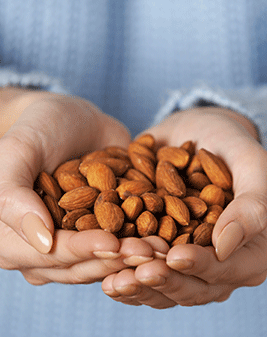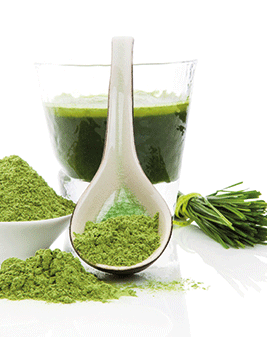Protein power!

The best meat-free proteins for health
Protein without meat
“It is quite possible to access the full range of amino acids which make up a complete protein through non-animal sources,” says Sian Morgan of Healing Harvest, Kinvara, Co Galway. “You will need a good varied diet consisting of nuts, wholegrains and pulses – these do not need to be consumed in the same meal, but preferably during the same day or so. Unless we are training hard or trying to build muscle for a particular reason, our protein requirements are roughly 56g per day for men and 46g per day for women unless pregnant or breastfeeding when it rises to 71g. A number of current diets place a great stress on the consumption of protein, but it should be relatively easy to reach the levels required on a daily basis through a balanced diet combining a variety of wholefoods.”
Legumes and pulses
“Beans and lentils are sold dried and in tins, and are a versatile source of protein – and also fibre,” says John Halpin of The Health Store in Dundrum. “Butter beans are often added to salads. Kidney beans can be added to a vegetarian chilli made with TVP (soya) mince. Aduki beans can be added to soup.”
Sian Morgan: “Legumes are high in protein although they need to be combined with wholegrains and nuts, though not necessarily in the same meal. For some people, legumes can be tricky to digest and this can lead to flatulence and bloating. A good tip is to pop in a stick of kombu seaweed whilst cooking legumes and pulses. This aids the digestion of the legume whilst also adding a fantastic mineral profile.”
Wholegrains
“Wholegrains are a key component of a non-animal diet,” says Sian Morgan. “They can be used whole as the carbohydrate component of a meal. Flakes can be made into a porridge or used as flours for bread, cakes or pancakes. Examples are millet, buckwheat and quinoa. Quinoa is a particularly important grain as it has a protein profile similar to that of milk and has the highest level of protein of all the grains. Check cooking instructions to remove the bitter coating which needs to be washed or cooked off.”
John Halpin says, “Millet and quinoa are two grains which are both high in protein and also magnesium. Quinoa can be used in salads in place of couscous or in hot dishes in place of rice. Millet and quinoa can be made into a gluten-free porridge.”
Protein powders
“Protein powders include whey, and also vegan proteins such as pea, hemp, rice, soya, all of which can be added to smoothies,” says John Halpin.
“More and more people are looking to protein powders to supplement the protein component of their diet,” says Sian Morgan. “My personal opinion is that, unless someone is an athlete, training hard, or working to create muscle after illness or injury this should not be necessary as they should be able to access adequate, good quality protein from a balanced diet. There are plenty of good quality non-GMO protein powders on the market these days.”

Nuts and seeds
“Nuts and seeds are the third part of the triad, which, when combined, can help create complete proteins,” says Sian Morgan. “They can be eaten as they are, although soaking aids their digestibility, or in the form of nut or seed butters. These foods are also an important provider of minerals such as calcium and essential fatty acids. An example of combining for complete proteins here could be a slice of good wholegrain toast with almond butter.”
John Halpin: “Almonds, brazil nuts and hazelnuts are all high in protein. All can be eaten as mid-meal snacks – either as butters added to crackers, toast or eaten whole. Almond butter goes well added to smoothies.”
Meat substitutes
“Meat substitutes often contain wheat, gluten and/or soy except with some made from a form of mycoprotein, derived from a fungus,” says Sian Morgan. “They can be useful for people making a move to a non-meat diet and for quick dinners, but they are often quite processed and therefore should not provide the mainstay of your protein intake. Someone moving to a meat-free diet should think about changing the basic structure of their meals, rather than simply trying to replace the meat component with something else.”
“Tofu is made from soya bean and is high in protein and also calcium,” says John Halpin. “It comes in different consistencies and has no real taste itself, but absorbs the taste of whatever it is added to or marinated in.”
Green foods
“Microalgae such as spirulina and chlorella as well as products such as wheatgrass and barleygrass can be important sources of protein,” says Sian Morgan. “Gram for gram spirulina is the highest source of protein on the planet. Some people do not like the taste of these products, but they can be used in smoothies so that the flavour is masked but the benefits are still felt.”
“Spirulina is a nutrition-dense seaweed, and has a good protein content along with B vitamins and iron,” agrees John Halpin.
Click here to read other Rude Food articles.
Click here to return to the Rude Health Magazine homepage.